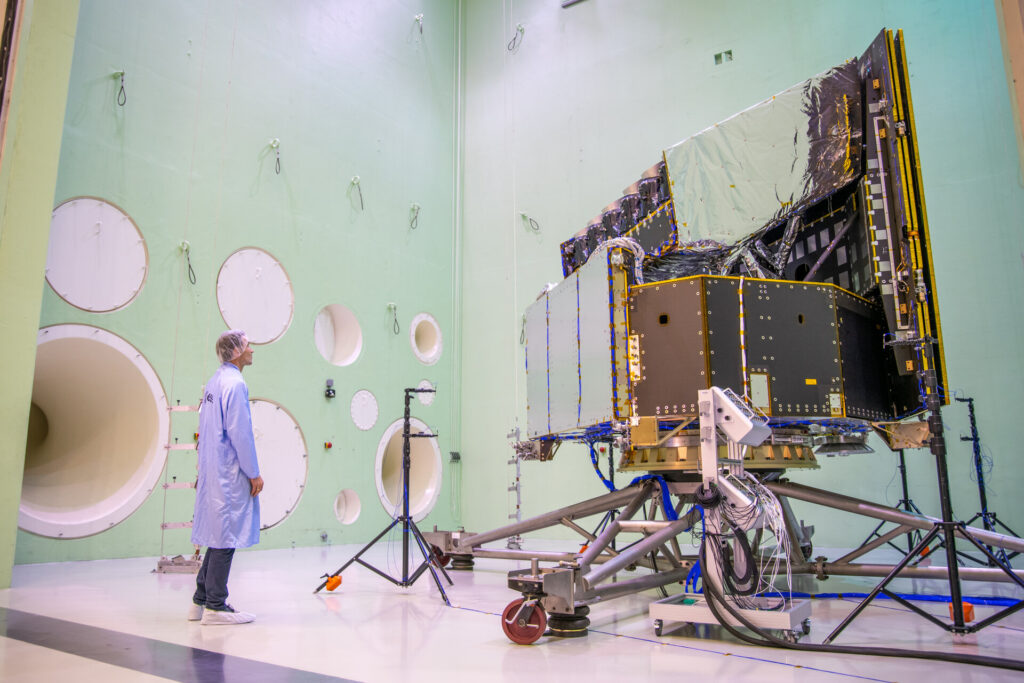The presented image was taken inside the LEAF camera (Large European Acoustic Facility) of the ESTEC test center located in the Dutch city of Noordwijk. A structural model of the PLATO Space Telescope can be seen on it.

The project of the PLATO telescope (PLAnetary Transits and Oscillations of Stars) was selected for implementation by ESA in 2014, its construction began in 2022. It is funded under the Cosmic Vision program. The Space Observatory will search for exoplanets using the photometric method by searching for small changes in the brightness of stars caused by the transits of planet-like bodies orbiting them.
The “eyes” of the new telescope will be a module of 26 cameras with an aperture of 12 cm, on which four CCD arrays capable of receiving 20.3-megapixel images will be installed. When working together, they will give a total field of 2.11 gigapixels, which will be a record in the history of space missions. Thanks to its configuration, PLATO will have a much larger field of view than the Kepler telescope and will be able to study relatively bright stars.
Last year, the prototype of the PLATO optical module passed a series of tests in a vacuum chamber, demonstrating its ability to withstand a stay in space. The next step was acoustic verification of the structural model of the spacecraft. In their course, it is exposed to the same vibrations that will occur during the launch of the telescope.
Acoustic tests are carried out in the LEAF chamber. Its length is 11 meters, width is 9 meters, height is 16.5 meters. On one of the walls there are several noise horns, similar in design to ordinary speakers. Nitrogen is supplied through the horns, which can create noise up to 156 decibels. The chamber is surrounded by a layer of concrete 0.5 meters thick.
At the moment, the launch of PLATO is scheduled for 2026. It will be brought to Lagrange Point L₂ of the Sun-Earth system and will accompany the James Webb Telescope and the recently launched Euclid Telescope. The main priority of the mission will be the search for exoplanets in the habitable zone around yellow dwarfs.
According to https://www.esa.int
Follow us on Twitter to get the most interesting space news in time
https://twitter.com/ust_magazine

